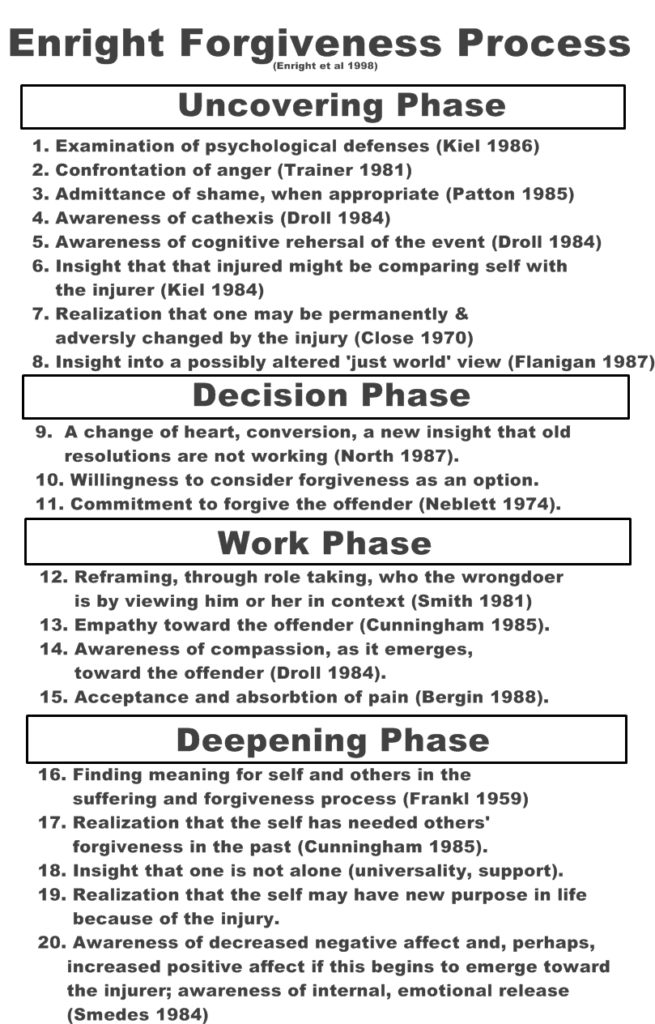Here are the central constructs for the Enright Forgiveness Process
During the forgiveness process, Reed and Enright (2006) report that the client does the hard work of the first phase, in the Enright forgiveness process, which is uncovering anger and shame, grieving the undeserved pain from the abuse, and reframing the former partner (personal history, fallibility, and culpability, yet inherent human worth), to relinquish debilitating resentment. Most importantly, Forgiveness Therapy can then take the paradoxical route of focusing the client’s thoughts, feelings, and behavior on a benevolent response to that former spouse rather than retaining the debilitating resentment.
Thus, Forgiveness Therapy ameliorates the negative outcomes of psychological
abuse. Another therapeutic factor in Forgiveness Therapy may be the acknowledgment
that the client herself is a person of worth. In the process of therapy, the client makes the effort to integrate the reality of the abusive spouse’s wrongdoing and his inherent human worth. This does not negate the reality of the wrongdoing of the abuse itself but rather establishes that what the abuser did, however hurtful and unfair, does not change his worth as a human being. As the client sees her abuser’s inherent worth, she then may be able to understand that she is also a person of inherent worth. The abuser’s mistaken view of her (as a worthless person who can be mistreated at will) does not have to be her view. This
rediscovery of inherent human worth can be enhanced in that the client recognizes that she is a person of courage because she is choosing to relinquish resentment and develop goodwill for the former abusive spouse (Reed & Enright, 2006).
References
Reed, G. L., & Enright, R. D. (2006). The effects of forgiveness therapy on depression, anxiety, and posttraumatic stress for women after spousal emotional abuse. Journal of Consulting and Clinical Psychology., 74(5), 920–929. https://doi.org/10.1037/0022-006X.74.5.920

